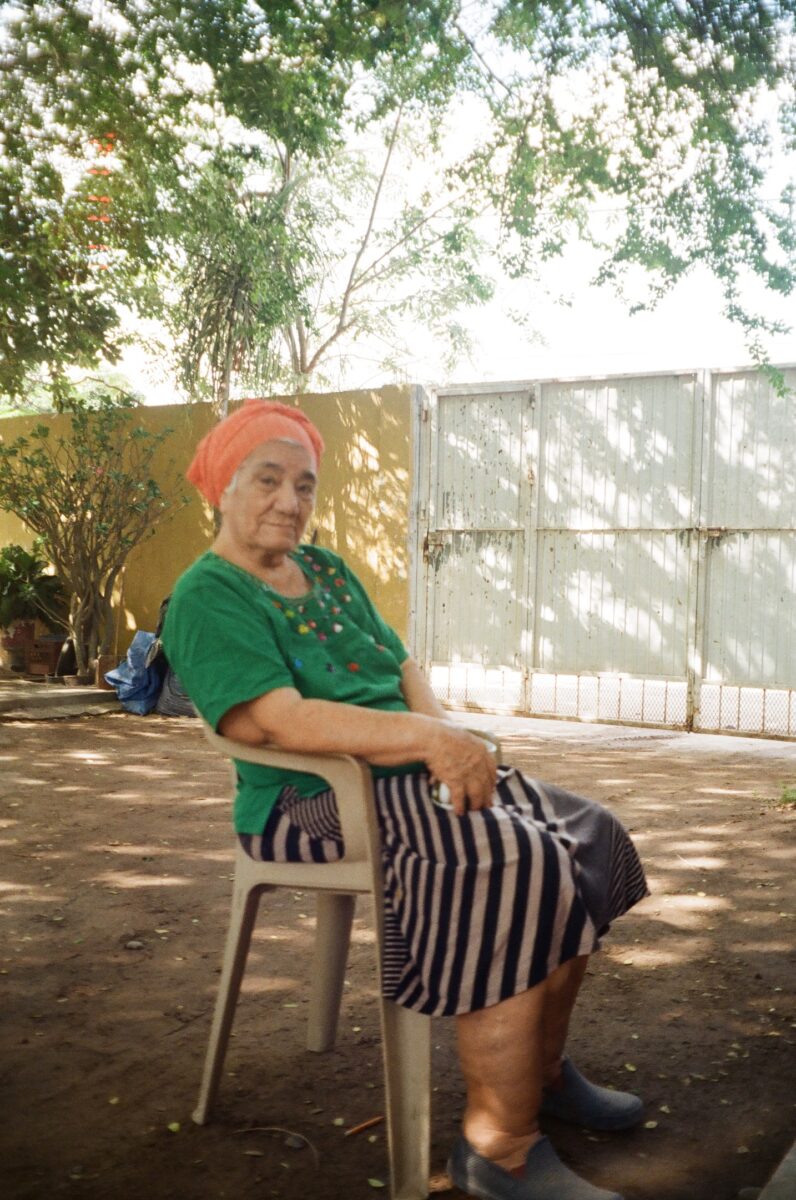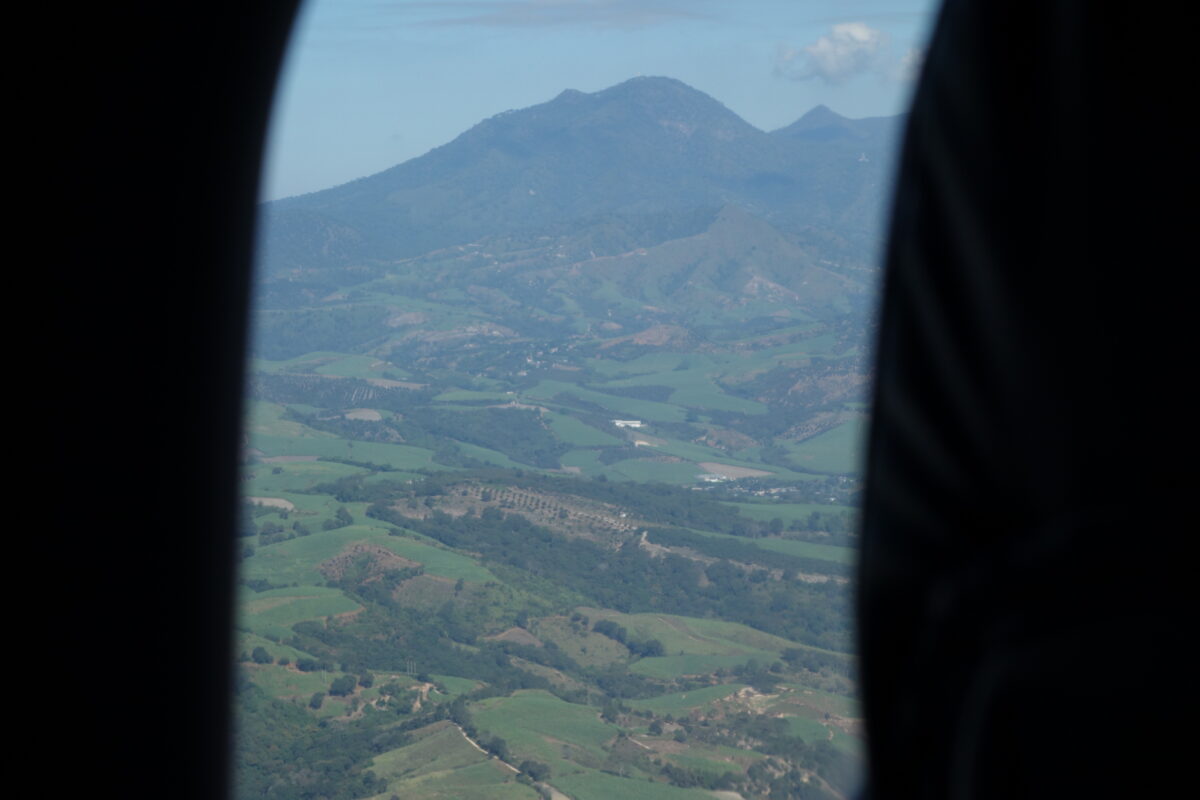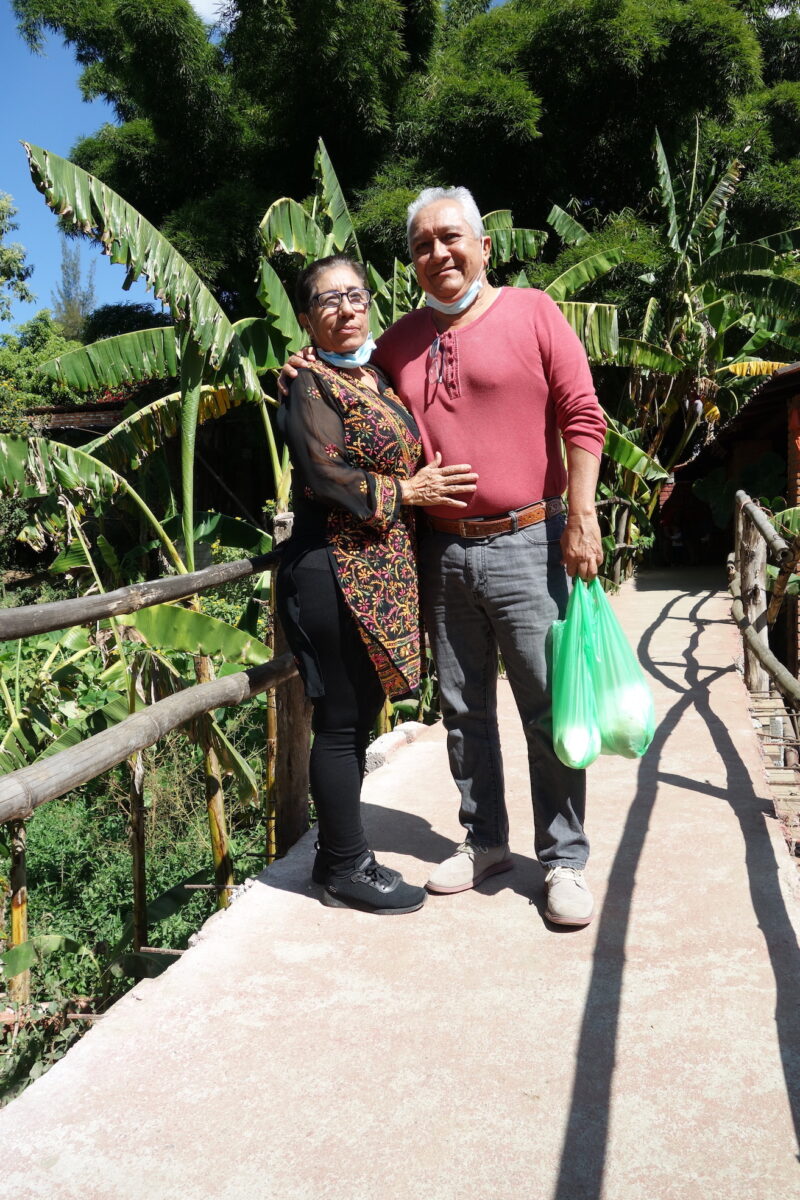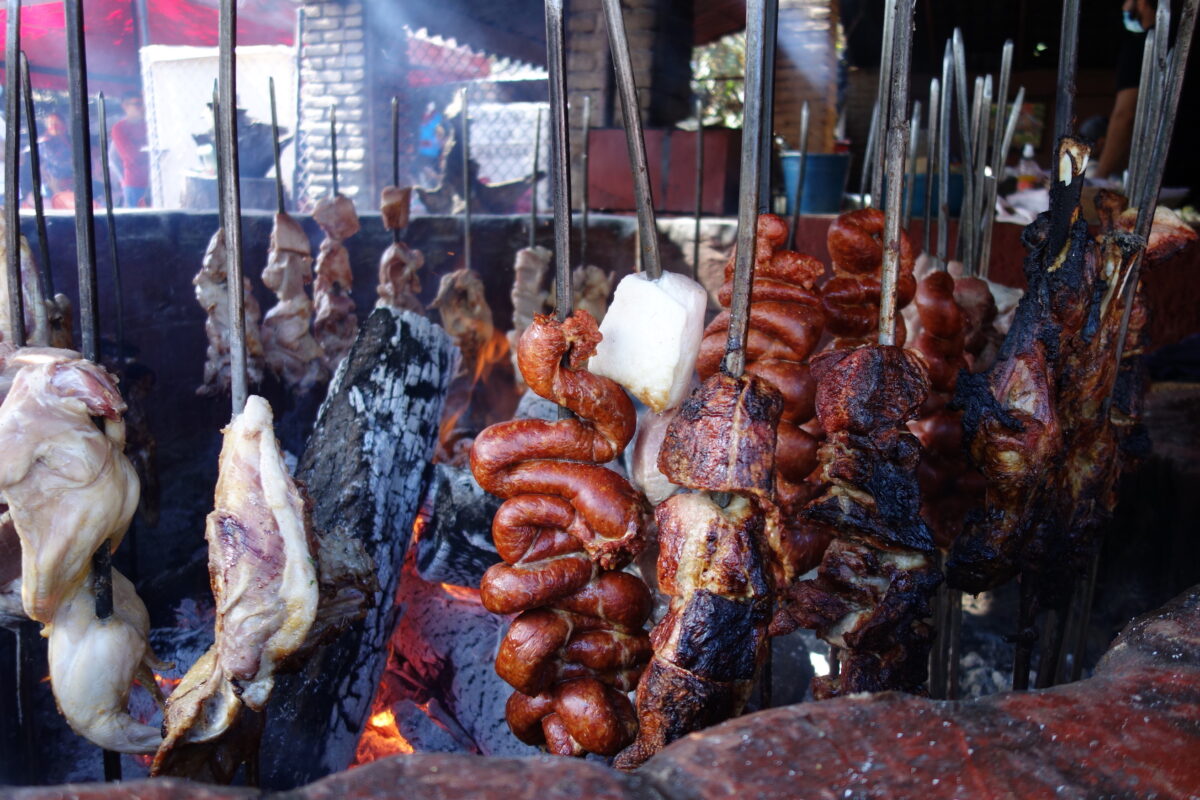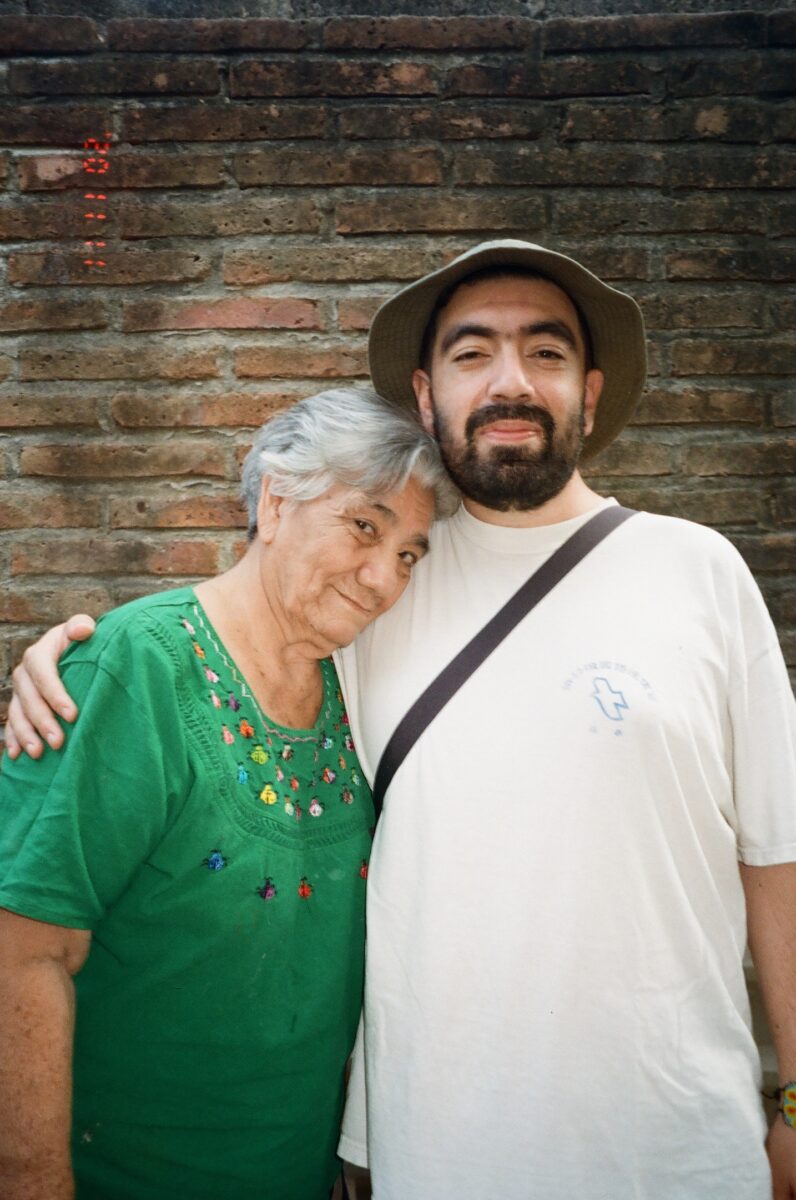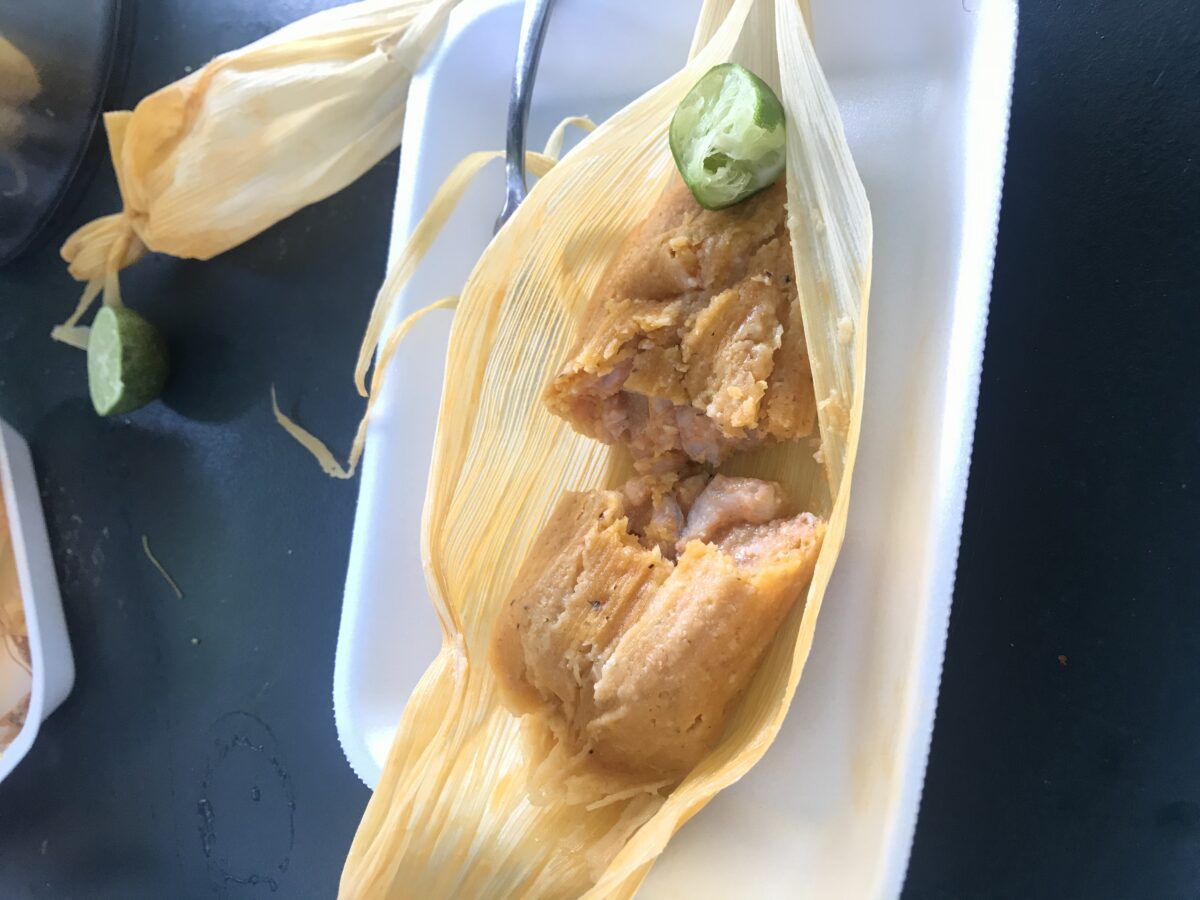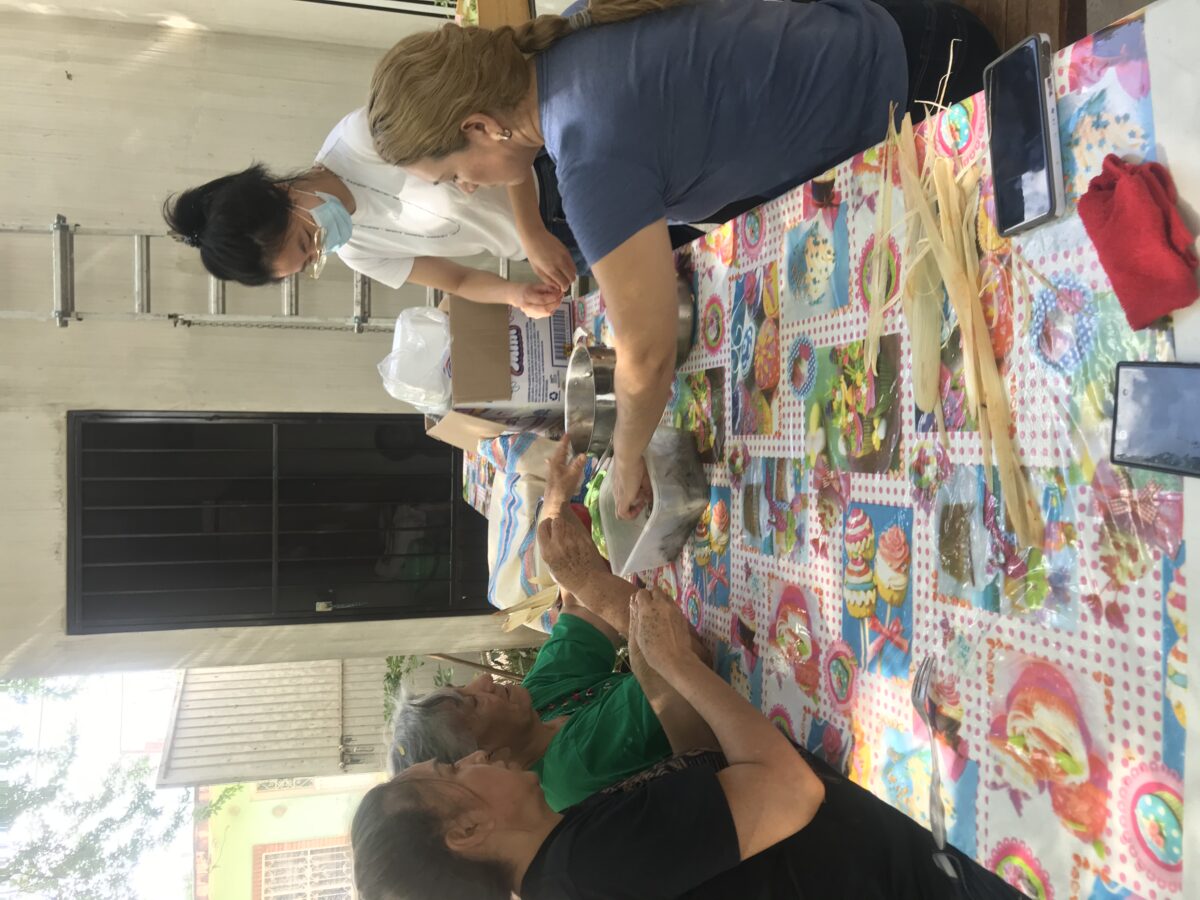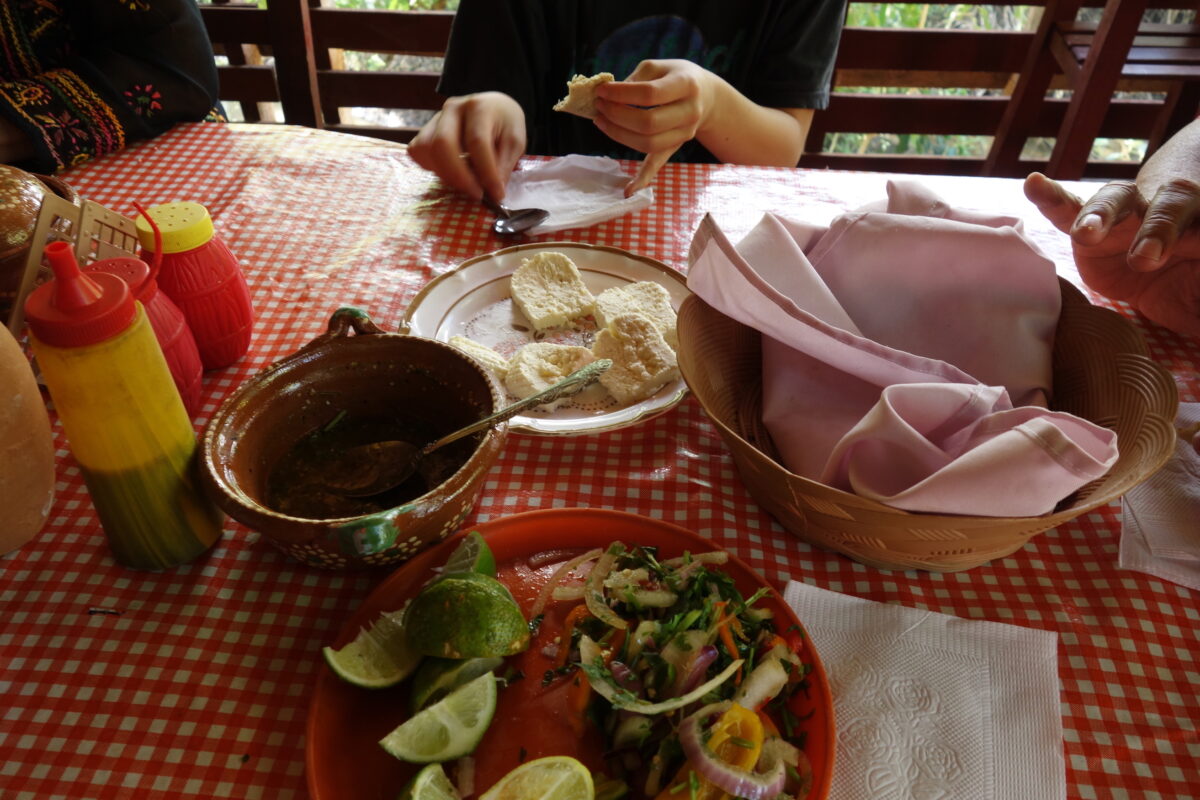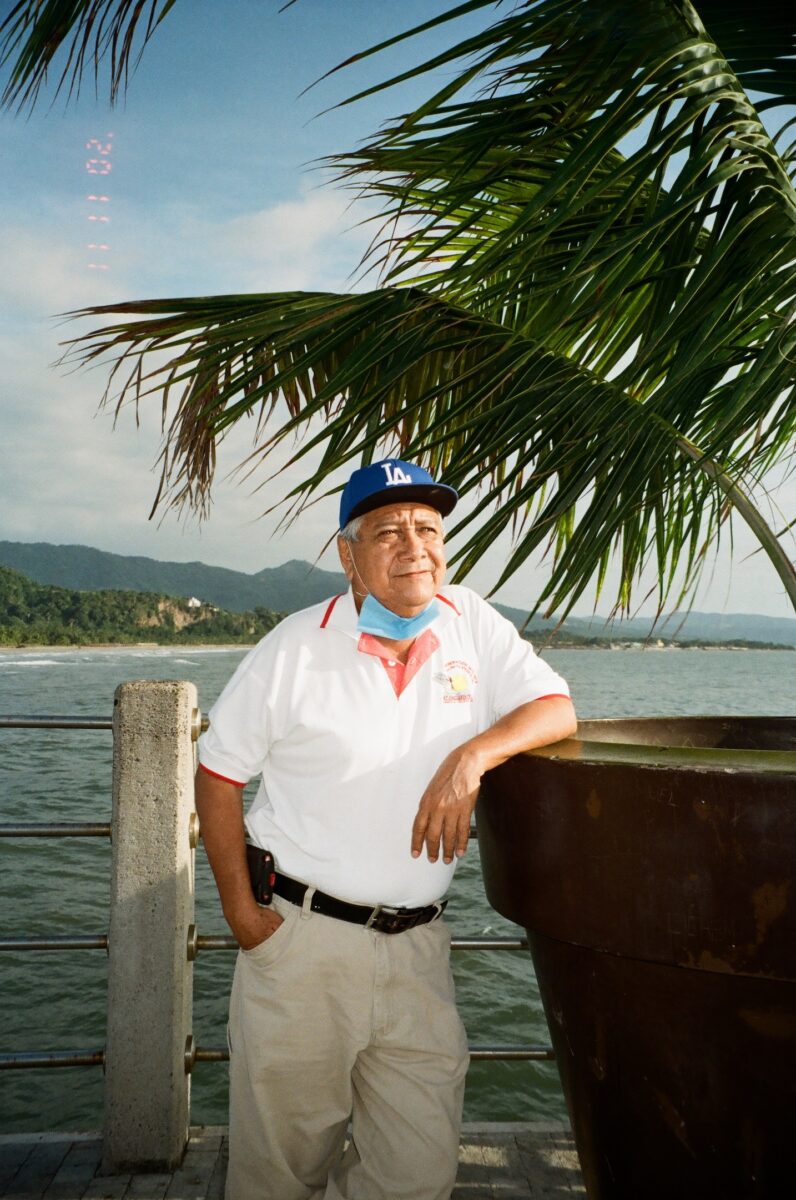After 12 years away, art director Esai Ramirez returns to Mexico to reconnect with his family. Plus, a guide to four days of fun in the coastal state of Nayarit, Mexico.
It was 5 a.m. in Mexico and we had 20 minutes until boarding began for our flight from Tijuana to the airport of Tepic, Nayarit. Traveling during a pandemic wasn’t ideal, but I’d felt a sense of urgency since I’d last spoken to my grandmother a few weeks prior.
Every time I talk to my grandmother on the phone, she asks me when I plan to visit her in Mexico. But this time, she half-jokingly added that it might be the last time I see her and my grandfather, given the state of the world. Although I didn’t think this could possibly be true, I also couldn’t stop thinking that it wasn’t impossible.
When I was a kid, I would spend middle school summer breaks with my family in San Vicente, helping plow my grandmother’s farmland and scooping out the hot center of bolillos (french rolls) to fill them with creamy refried beans and panela cheese. But those days had long passed. Since then, it’d been over 12 years since I’d last seen my grandmother. Even my most recent visit was a short and bittersweet event, as my father and I went for just a day to register my brother for la prepa (high school).
After that day, I struggled to stay in contact. Over the years, my dad constantly reminded me to call and ask my grandmother how she was. But I was too consumed by my own life: growing up, going to school, working in the big city, pursuing my ambitions, general busyness.
In 2020, the guilt that had previously been easy to push away began eating me up inside. All I could think of was my grandmother: the matriarch of our family, the keeper of our past traditions. The more I thought about her, the more I realized how much I needed to see her, especially now that the world seemed to be falling apart before our eyes. I knew I had to make the trip home.
How Oaxacans are still celebrating Día de los Muertos this year →
As we boarded the plane to Tepic, I started to panic. Despite precautions, the pandemic still posed a major risk. I was out of my element in an environment where I had little control. Most of all I worried that, after years with little to no contact, my grandmother would seem like a stranger to me—or even worse, I would seem like an outsider to her.
Unable to sleep, I tried to push away my fears by imagining all the things about San Vicente that made me get on the plane in the first place. I imagined what my grandmother’s house looked like; how the dry, hot sun would warm my skin; the soil of my great-grandfather’s farm in between my toes; the smell of my grandmother’s azufrado beans cooking in the morning after a successful harvest; the early morning sounds of men and women calling out from megaphones, riding atop pickup trucks selling water or gas or fresh-baked bread. Eventually, I managed to doze off, dreaming of the bright orange heads poking out of my grandmother’s famous shrimp tamales, fresh from the steaming hot pot.
Art gets political in Mexico City →
The plane touched down early in the morning in Nayarit. Outside the airport, my Aunt Delia and Uncle Rafa awaited me. Aunt Delia greeted me with a (pandemic-safe) fist bump. Looking at her face felt like looking in a mirror; she is one of the oldest women in my family to bear the dark, full eyebrows and deep forehead wrinkles I inherited.
We left the airport and drove along a small highway through vast farmland bearing endless agave plants and mounds of harvested corn husks. All the greenery was stunning; my aunt mentioned that it wasn’t like this before yesterday, when a patch of rain suddenly brought everything back to life. My uncle played a song by Luis Perez Meza and chatted about the day’s plans. I half-listened; as he spoke, I gazed out at the land passing by, soaked in the old ranchero music, let the wind coming in through the car window graze my face.
We spent the morning exploring the countryside, stopping for a late breakfast at Restaurante de la Sierra, a small open-air restaurant, and visiting Lake Santa Maria Del Oro, where a community of Huichol people sells artisanal goods from bags to keychains to sculptures. Eventually, my Uncle Rafa got a phone call from another one of my aunts, who let him know it was time for dinner at my grandparents’ house.
How to spend a weekend in Valle de Bravo →
I’d been looking forward to seeing my family for weeks—still, I was terrified. Remember, I hadn’t spoken to my grandmother in years, much less seen her. I barely remembered the names of the aunts and uncles waiting for me. There was a whole new generation of cousins and nieces and nephews I had yet to meet.
“I was older, but the childhood memories I’d held close had stood the test of time.”
But as we got closer, I began to recognize my surroundings. We drove alongside the Rio San Pedro, which separates San Vicente from the neighboring town of Tuxpan. This was the same river that I splashed in as a child while my grandmother washed our family’s clothes on the rocks—that dries up in the summer just in time for the annual reventón (party) in the riverbed uniting both towns, and floods during the winter and forces the people of both towns to evacuate to higher ground. The sudden rush of familiarity gave me some peace of mind; I was older, but the childhood memories I’d held close had stood the test of time.
At last, we pulled up to my grandmother’s house. I jumped out of the car, hurried to the front door, and stepped inside. There, at the top of the stairs, my grandmother was waiting. I stared at her and she stared back. Suddenly, we both teared up. All my fears and concerns melted away. I had finally come home.
The days that followed were filled with family, food, and revisiting memories. In the mornings, we crossed the river into Tuxpan for bolillos, panela cheese, champiñones (mushrooms), nopal (cactus paddle), and tomatoes. Once, a man approached my aunt and told her that I looked familiar. As soon as she mentioned I was the son of “Chaquin”—my dad’s nickname, which means “turtle”—he immediately lit up; he recognized me because I looked exactly like my dad.
“I could feel my great-grandfather’s soul in the earth beneath me.”
At home, my grandmother pulled out a giant trunk full of photos and documents about our entire family she’d collected over the years. We went through them, reminiscing on past visits, late pets, and funny family antics. She showed us photos of her parents (my great-grandparents), photos of their families, and photos of her as a child. We looked back on friends long gone and younger versions of familiar faces. I was amazed by the contents of this unassuming wooden trunk, which took us back in time and quietly kept our entire family history intact.
One day, my aunt drove us to the outskirts of San Vicente to visit my great-grandfather’s ranch. Considered hallowed ground by our family, it is the place where they all congregate for special occasions and celebrate his memory. There, I revisited the giant tree that we would run around as children, the old brick oven that my great-grandfather made and that we still use on special days, and the rest of the farmland he used to live off of. Standing there, I felt something spiritual; I was there by myself, and yet I didn’t feel alone—I could feel my great-grandfather’s soul in the earth beneath me. He may be long gone, but his memory is very much alive there.
My last day in San Vicente was spent preparing shrimp tamales—the day I had been waiting for. For years, I’d wanted to do this again side by side with my grandmother.
First, she taught me how to prepare the shrimp for cooking, how to properly peel them, different styles of seasoning. We chatted about the island of Mexcaltitán—how the original shrimp tamales were sold there long before her, how she’d learned the recipe from her mother-in-law, and how she spent more than 30 years making and selling them at local schools to make a living.
“I gazed at my family gathered together and slowly realized all I’d taken for granted.”
Soon, aunts, uncles, and cousins began showing up to help prepare. With more and more hands in the kitchen, I saw that this recipe wasn’t just any recipe—it was an heirloom passed down from generation to generation. It was our heritage in the form of food; our family history wrapped up in a corn husk and steamed until perfectly cooked through.
As we worked, I gazed at my family gathered together and slowly realized all I’d taken for granted: the comfort of going home; the strength of kin; the precious memories that tie us all together across space and time. After everything—school, jobs, moves, world-shattering events—my family was always there, waiting for me at the other end with open arms. I knew then that there would always be a place for me in San Vicente. And that no matter how far away any of us went, when we returned, we would always be welcomed.
Day 1: Santa Maria del Oro
Stay
During this trip, I had the privilege of staying with my family. But for anyone visiting San Vicente or Tuxpan, I’d recommend finding a hotel in Tepic (the capital of Nayarit, about an hour and a half south) and using a guide familiar with small neighboring towns in the area.
Eat
Twenty minutes from the airport, check out open-air restaurant Restaurante de la Sierra for a farm-to-table breakfast. When you order your food, they bring out a plate of picado (chopped onions, chile serrano, and cilantro), some fresh handmade tortillas, and fresh panela cheese. You’ll know you are at the right place if you see crowds waiting to get in and an open fire pit with various meats cooking on vertical spits.
Do
Visit Santa Maria Del Oro. It’s a small town centered around a lake that local legend says has no bottom. It is a 30 min drive from the Tepic Airport or 3.5 hours from Mazatlán. The lake is named after nearby mining caves and is surrounded by restaurants and small hotels overlooking the lake itself. If you go to the top of the hill, you have a great view of the entire lake alongside stands of Huichol artisans selling handmade goods in their signature bead style. Try the coconut water sold by a local vendor from the back of his truck. It will be the freshest and highest quality coconut water you will ever try.
Day 2: San Vicente
Stay
For a visit to San Vicente, I’d rent an Airbnb in nearby Tepic. Tepic is the capital of Nayarit and has the most infrastructure. The housing options are also much more reliable. From Tepic, I would drive with a guide to any of the places mentioned in this itinerary just to get the best experience.
Eat
Visit La Vitamina in Tuxpan. This classic locals’ spot is known for its shrimp dishes and zarandeado, a style of grilling fish over hot wood coals that originated in the state of Nayarit over 500 years ago. The place is lively with families and locals eating fish, drinking, and singing along to local conjuntos playing Mexican classics.
Do
In San Vicente’s neighboring town of Tuxpan, visit El Mercado de Tuxpan early in the morning to buy fresh seasonal fruits and vegetables. Find the lady selling panela cheese and the other lady selling freshly baked french rolls and combine the two to make a simple yet satisfying sandwich.
Day 3: Mexcaltitán
Stay
I’d recommend getting an Airbnb or Hotel in Tepic, where there are more reliable housing options.
Eat
If you have the time, La Barca, on the neighboring smaller island of Mexcaltitán, is a legendary tourist spot. Tell the motorboat driver that you want to go to the restaurant. Here, they prepare shrimp in a plethora of ways like aguachile, a la diabla, seco (dried), albondigas (meatballs), and paté. Be sure to get there at least two hours before it starts to get dark, or else you’re bound to run into some nasty mosquitos.
Do
Mexcaltitán is a “magic” island about a 30-minute drive from San Vicente, Nayarit. It is said that it was an island that the Aztecs temporarily occupied when they were a nomadic society (they later settled in what is now Mexico City). There is a small museum featuring ancient clay sculptures, giving visitors a crash course history lesson. Try the seasonal bolis made with ice, milk, cane sugar, and a variety of seasonal fruits by local artisans.
Day 4: San Blas
Stay
There are plenty of boutique hotels and homes you can rent alongside the coast in San Blas. Check Airbnb for available listings.
Do
Visit San Blas and soak in the golden reflection of the sun on the surface of the beach. Also check out Muelle de San Blas, the dock that inspired the famous Maná song.
Eat
All of the restaurants on the beach of San Blas are excellent—just be sure to arrive a few hours before 4 p.m. Most locals go between noon and four to avoid the mosquitos that hang out in the area once the sun goes down and the weather cools off.
Other Highlights
Don’t leave without visiting the Juan Bananas stand, a legendary banana bread stand right at the entrance to the beachside restaurants. The entire stand smells of fresh-baked bread, and every loaf comes out perfectly soft and warm.


